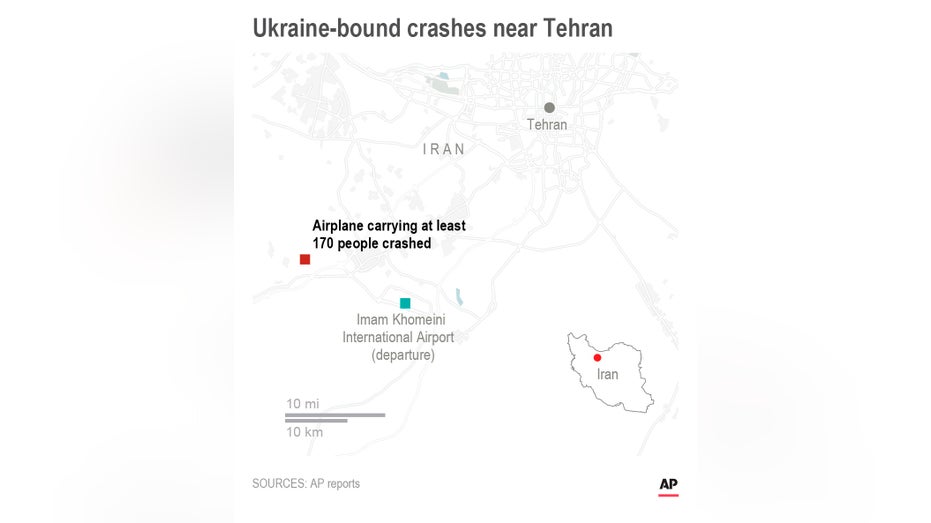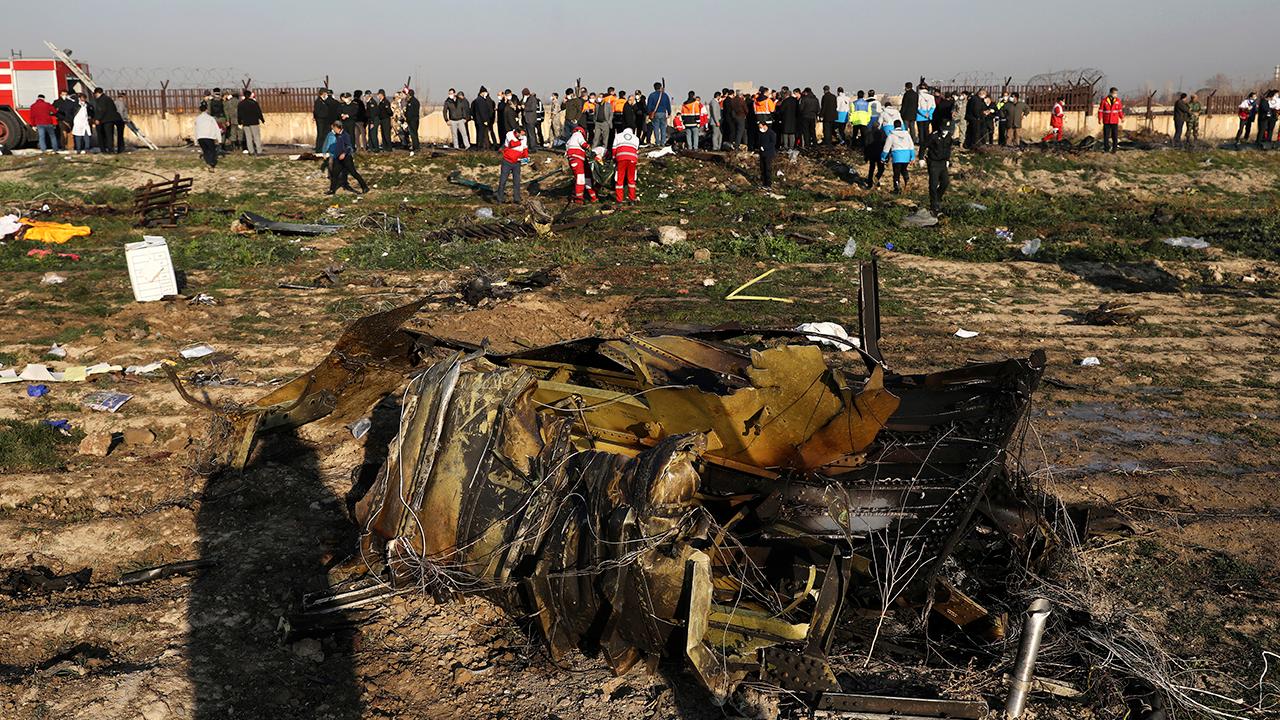Boeing stock tumbles after Iran crash involving 737
Ukraine International Airlines said it had indefinitely suspended flights to Tehran after the crash
Boeing stock slid Wednesday after a 737-800 jetliner operated by Ukraine International Airlines fell to earth shortly after takeoff in Iran, heightening scrutiny of the planemaker whose newer, more fuel-efficient 737 Max was grounded last year in the wake of two crashes that killed everyone on board.
The Chicago-based jet manufacturer's shares fell 1.9 percent to $330.69 in New York trading on Monday, widening a decline of 19 percent since the March 10 disaster outside Addis Ababa, Ethiopia. The Federal Aviation Administration halted commercial flights with the aircraft, which had become the best-selling model in Boeing's history, shortly afterward and investigators linked the crash and an earlier one in Indonesia to new anti-stall software.
GET FOX BUSINESS ON THE GO BY CLICKING HERE
The planemaker's inability so far to win regulatory approval for a software patch that would return the Max to the skies has forced U.S. airline customers including American, Southwest and United to trim flight schedules for months and prompted the departure of CEO Dennis Muilenburg, who had already lost the title of chairman.
Stocks In This Article:
The crash of Ukraine International Airlines came hours after Iran launched a ballistic missile attack on Iraqi bases housing U.S. soldiers, but both Ukrainian and Iranian officials said they suspected a mechanical issue brought down the three-year-old Boeing 737-800 aircraft.
"This is a tragic event and our heartfelt thoughts are with the crew, passengers, and their families," Boeing said in a statement. "We are in contact with our airline customer and stand by them in this difficult time. We are ready to assist in any way needed."

Map shows Ukraine-bound airplane crash near Tehran, Iran.
Ukraine International said the plane was built in 2016 and delivered directly to the carrier; its last scheduled maintenance was conducted on Monday, Jan. 6.
The 737-800 was part of the "next generation" of the widely flown single-aisle airliner, introduced in the 1990s to update a model that began commercial flights in 1967.
The Max is the newest version of that plane, designed when jet fuel prices were spiking in the last decade to be more fuel-efficient than its predecessors. Deliveries of the planes didn't start until mid-2017, and only about 70 were flown by U.S. carriers when they were grounded after the crashes in Ethiopia and Indonesia.
The 737NG is far more widely flown, with thousands operated around the world.
Ukraine International said it had indefinitely suspended flights to Tehran after the crash. "It was one of the best planes we had, with an amazing, reliable crew," Yevhen Dykhne, the company's president, said at a briefing following the crash.
UNITED AIRLINES PULLS GROUNDED 737 MAX FROM SCHEDULES THROUGH JUNE
Ukrainian President Volodymyr Zelenskiy ordered a sweeping inspection of all civil airplanes in the country, “no matter the conclusions about the crash in Iran.”
The downed airliner had been delayed from taking off from Imam Khomeini International Airport by almost an hour. It took off to the west, but never made it above 8,000 feet in the air, according to data from the flight-tracking website FlightRadar24.

A rescue worker searches the scene where a Ukrainian plane crashed in Shahedshahr, southwest of the Iranian capital of Tehran on Wednesday, Jan. 8. (AP Photo/Ebrahim Noroozi)
It remains unclear what happened. Qassem Biniaz, a spokesman for Iran's Road and Transportation Ministry, said it appeared a fire struck one of its engines. The pilot of the aircraft then lost control of the plane, sending it crashing into the ground, Biniaz said, according to the state-run IRNA news agency.
An Iranian official has been quoted saying the plane's black box, which contains recordings of the moments before the crash, would not be shared with Boeing or U.S. regulators, according to the BBC.
Boeing, like other airline manufacturers, typically assists in crash investigations. That effort, in this case, could be affected by the U.S. sanctions campaign in place on Iran since President Trump unilaterally withdrew from Tehran's nuclear deal with world powers in May 2018.
Both Airbus and Boeing had been in line to sell billions of dollars of aircraft to Iran because of the deal, which saw Tehran limit its enrichment of uranium in exchange for the lifting of economic sanctions. But Trump's decision halted the sales.
Under decades of sanctions, Iran's commercial passenger aircraft fleet has aged, with air accidents occurring regularly for domestic carriers in recent years, resulting in hundreds of casualties.
A number of 737-800 aircraft, meanwhile, have been involved in deadly accidents elsewhere.
In March 2016, a FlyDubai 737-800 from Dubai crashed while trying to land at Rostov-on-Don airport in Russia, killing 62 onboard. Another 737-800 flight from Dubai, operated by Air India Express, crashed in May 2010 while trying to land in Mangalore, India, killing more than 150 onboard.
The 737-800s have been the subject of inspections since last year after airlines started reporting cracks in a part that keeps wings attached to the fuselage.
Boeing said in October that airlines around the world had inspected 810 planes following an order from U.S. safety regulators. Of those, 38 planes — or 5 percent — had needed repairs, Boeing said at the time. It isn't unusual for regulators to require inspections of a specific component or area for planes that have been in service for a long time.
The Associated Press contributed to this article.




















